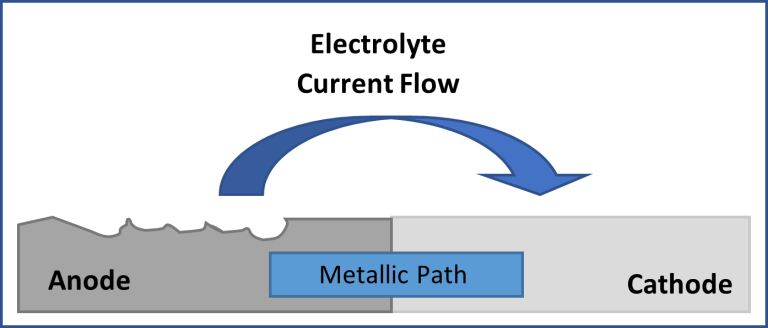Protecting the future
Protecting the future
Protecting the future
Protecting the future
Protecting the future
Protecting the future
Protecting the future
4th October 2021
Pipeline coatings and cathodic protection systems in horizontal directional drilling (HDD) pipeline installations.
A complex topic that’s challenging to discuss without first starting at the very beginning, the reason for pipeline coatings and cathodic protection systems: corrosion. This blog post is the first in a series of posts that will look at the effect that HDD installations have on the performance of pipeline coatings and cathodic protection systems.
With very few exceptions, all metals must be refined and processed from their natural state to become usable materials. Iron ores, for example, are rocks and minerals rich in iron oxide mined commercially and converted into various types of iron through several different refinement processes. The most common process is smelting iron ore to produce pig iron. Pig iron, with very high carbon content, is a very brittle material and will typically require further processing. Processing pig iron by reducing its carbon content and adding elements such as manganese or nickel will produce usable, refined steel alloys suitable for a plethora of applications.
Corrosion is the natural process of converting the refined metal back into its more chemically stable form. During the corrosion process, the refined metal deteriorates due to an oxidation-reduction reaction with its environment. Almost all forms of corrosion occur through the action of the electrochemical or corrosion cell. The elements common to all corrosion cells are an anode where oxidation and metal loss occur, a cathode where reduction and protective effects occur, metallic and electrolytic paths between the anode and cathode metals, and a potential difference that drives the cell. Corrosion can occur either when two different types of metals have physical or electrical contact with each other and are immersed in a common electrolyte, or when the same metal is exposed to an electrolyte with different concentrations. This type of corrosion is called galvanic corrosion and is common to many structures including cars, storage tanks, and oil & gas pipelines.
In the case of oil & gas pipelines, where the metal type is consistent across the length of the structure, certain sections of the structure will still be anodic or slightly more electrically negative than other sections. Current will flow from the anodic section, through an electrolyte, to the more electrically positive cathodic section. Corrosion occurs at the anode where the current leaves the structure, but it does not occur at the cathode; therefore, structures do not simultaneously corrode but instead begin in spots or sections. Eventually, corrosion progresses throughout the structure as the electrochemical reaction migrates and moves. The electrolyte element of the corrosion cell is an electrically conducting solution that allows current to flow, in most cases this is water. For oil & gas pipelines the electrolyte is typically the moisture in the soil or atmosphere, or in the case of offshore pipelines, seawater.

So how do you stop corrosion?
Basically, it’s eliminating one of the elements of the corrosion cell. For oil & gas pipelines there are two main approaches, the primary approach is to remove the electrolytic pathway between anodic and cathodic sections of the pipe by applying a barrier or coating onto the metal surface, stopping the current flow. Coatings are considered the first line of defence against pipeline corrosion. The secondary approach and second line of defence for preventing pipeline corrosion is applying a cathodic protection system. Cathodic protection introduces an anode external to the pipeline structure, allowing the entire pipeline structure to behave as a cathode and preventing corrosion from occurring.
Selecting the right pipeline coating and designing a sufficient cathodic protection system for pipeline installations, specifically HDD, can be an arduous task. This blog series will look at how effective each corrosion prevention method is for an HDD installation. Up next, what is a corrosion protection system and how does it work?
Garrett Oortwyn, P.Eng.
Product Manager – Mechanical Protection & Directional Drilling Systems
